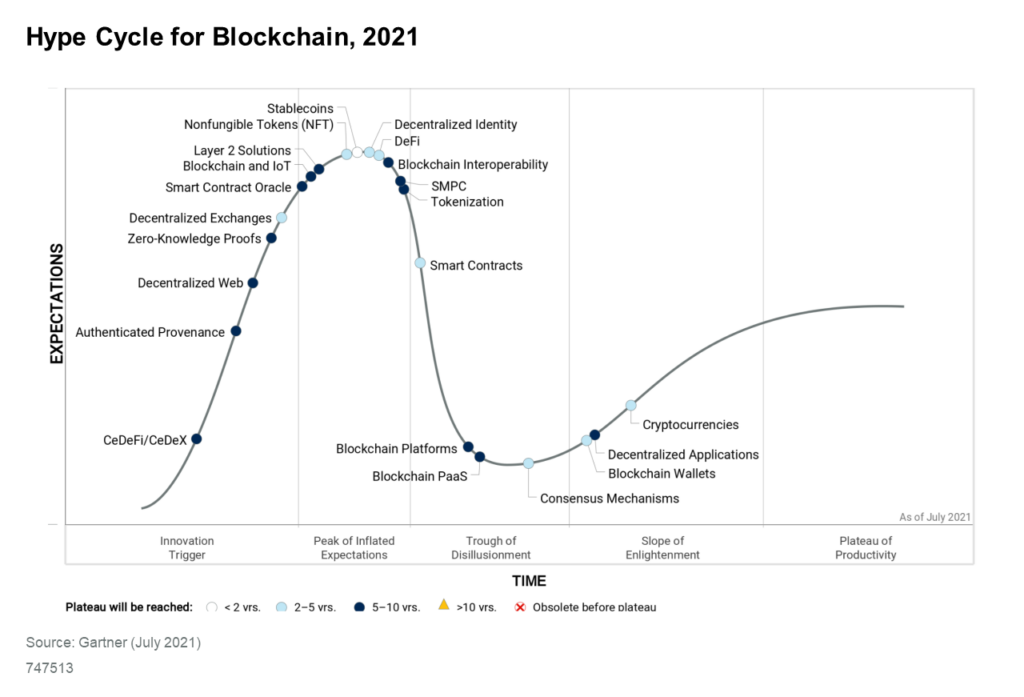What is TradFi, CeFi and DeFi? Is CeDeFi going to rule the crypto world?
When it comes to purchasing, acquiring and storing your hard-earned cryptocurrencies and crypto assets, you have the choice between CeFi and DeFi – centralized and decentralized finance.
CeFi currently dominates cryptocurrency trading and investing. However, DeFi is quickly gaining popularity as investors move away from the control, uniformity, and authority of centralized exchanges. Are there any other options in between that might also be worth considering? The current landscape of finance will provide a good starting point for our analysis.
What is TradFi?
The traditional finance ecosystem (TradFi) was invented several thousand years ago in ancient Mesopotamia, and since then it has grown to become a bloated beast no one understands and knows how to control. Whenever we refer to TradFi, we are referring to the banks and financial services we interact with every day. TradFi's entire ecosystem, however, remains opaque and incomprehensible to most people, since it lacks any clear and transparent rules or agreements that govern the transfer, investment, and creation of financial assets and goods.
What is DeFi?
The other end of the spectrum is Decentralized Finance (DeFi). DeFi carries crypto's core concept of decentralization - in which anyone anywhere in the world can conduct transactions without the involvement of middlemen - to its logical conclusion. It is a web of interconnected protocols that are governed by smart contracts, facilitating the lending, saving, and trading of decentralized financial products and services without relying on a bank or payment processor.
The decentralized nature of DeFi makes accessing it quite hard for many non-technical users. Companies like Cake DeFi aim to make this process easy and secure.
What is CeFi?
Centralized Finance, or CeFi, refers to a financial practice in which users can earn interest and obtain loans on their cryptocurrencies through centralized exchanges and platforms. To process crypto orders, you must entrust your private keys to a third party, in most cases an exchange or a lending platform. Compared to DeFi, CeFi facilitates faster, more cost-effective transactions while keeping TradFi's ease of use and security. In practice, though, separating CeFi from DeFi may not always be straightforward for the average user.
What’s the difference between CeFi and DeFi?
CeFi and DeFi differ primarily in how they approach the topic of trust. Using DeFi has the advantage that no trust is required from the user, since the private keys are managed by the investors themselves. CeFi platforms, on the other hand, store private keys in their database and theoretically have access to any funds entrusted to them. Consequently, centralized platforms are also more likely to be able to recover account access and assets if something goes wrong.
But that doesn't mean you can blindly trust centralized platforms. Before signing up, always conduct your own research about the platform, its transparency, and its history. Likewise, investors should check out DeFi protocols and smart contracts in order to avoid surprises such as rug pulls and smart contract exploits.
CeFi platforms’ customer support and engaging community may be a major reason why new customers sign up for the service. This kind of support is not available to DeFi investors at all, since no central entity has oversight over the protocol, the keys or the identity of the users.
What about CeDeFi? Is there any room for that?
Imagine a world where CeFi and DeFi's best features are combined to create a new user experience that empowers customers to not only trust, but to verify services. Recently, more and more so-called CeDeFi services have appeared. In contrast to CeFi platforms, a CeDeFi platform such as Cake DeFi is not a black box where processes remain hidden, but rather a platform that establishes trust through transparency, where customers receive regular cash flow reports and full transparency regarding blockchain nodes, liquidity mining pools, and rewards.
TradFi services cannot replicate this approach since rails aren't open, most contracted parties aren't transparent, and trade secrets hinder effective collaboration. It occurs because there is no cryptographic security, such as publicly verifiable fund management and multisignature wallets.
CeDeFi providers, on the other hand, with transparency-first approaches can use the vast amounts of data derived from transparent blockchains for deep risk modeling. In addition, these platforms allow users to verify smart contracts in use, comprehend the underlying takenomics, and as such access and model DeFi risk. These things aren't possible with CeFi platforms, since most processes remain unclear to users.
The hype cycle curve shows that CeDeFi's potential is still in its infancy, but continued application and expansion through platforms like Cake DeFi will pave the way for its widespread adoption. In the light of the recent CeFi turmoil, this novel approach to focusing on transparency and security aspects will greatly benefit retail investors as well as make the whole ecosystem more resilient to shocks in the future.

As more CeFi platforms shutter or become illiquid, you should consider moving your funds to a CeDeFi platform such as Cake DeFi, where all services are transparent. In addition, new users will also receive a $30 welcome bonus if they allocate at least $50 to the Freezer or Lending product (terms and conditions apply).

